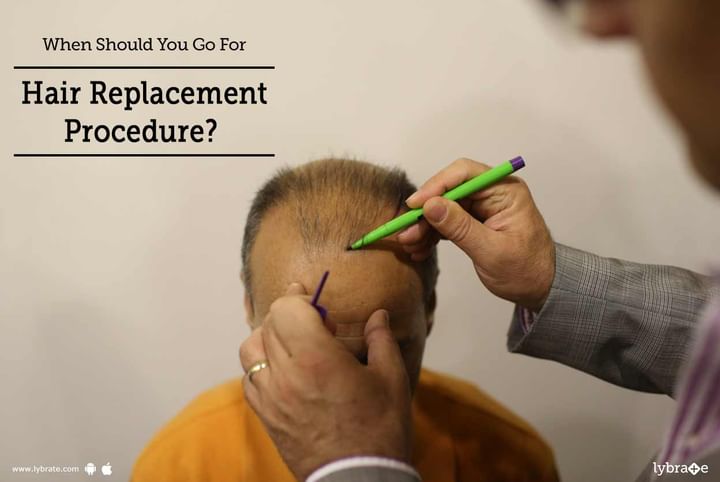When Should You Go For Hair Replacement Procedure?
Strong, healthy and lustrous hair acts as a natural ornament, adding an extra spark to one's personality. Women, particularly, are very possessive about their tresses. They try every effective hair care routine and remedy to maintain their hair. Unfortunately, at times, certain factors can trigger hair problems. For young adults, the problem can be highly demoralizing and depressing. In extreme cases and left with no other options, people opt for the various hair replacement procedures such as Hair Transplant, Hair Weaving, PRP, to name a few. In this article, we will mention the various factors that act as contributing factors triggering a hair replacement.
Conditions That Trigger Hair Replacement
On an average, it is normal for a person to lose between 50-100 hair strands daily. The problem starts when the hair loss exceeds 150 (often 200-250) with very little hair regrowth. With time and if left untreated, the condition worsens with the thinning of the scalp. Soon after baldness sets in (complete, partial or in patches). Men and women may both be equally affected by the condition. Mentioned below are some of the common reasons that result in hair fall, hair thinning and baldness.
Genetics: A term Androgenic Alopecia is often used to describe the severe hair loss in young adults (both the sexes), with the hereditary or genetic condition being the main wrecker in chief. In men, a condition called Male pattern baldness (some even in their early 20's) is characterized by hair loss and baldness mainly from the front part of the scalp and the crown. In women (female pattern baldness), the condition can result in severe hair loss from the crown and the overall thinning of the scalp. However, in most women, the visible signs appear after 40.
The hair loss can also be a part of the normal aging process, a condition medically termed as Involutional Alopecia.
The hair growth cycle consists of three stages-
- Anagen, a phase where there is active hair growth.
- Catagen, a phase characterized by transitional hair growth.
- Telogen, a phase when the shedding of hair takes place.
In some people, there may be a condition known as Telogen effluvium.This condition is characterized by an increased hair fall in the resting phase resulting in temporary thinning of the scalp.
- In some people, the hair loss can also be triggered by Alopecia Universalis, a condition where a person starts losing all the body hair at an alarming rate.
- Few young adults and children may rapidly start losing hair in patches (Alopecia areata). Over time, the condition may progress into Alopecia Totalis resulting in total baldness. However, the good news is, in most people the condition is reversible.
- Certain inflammatory disorders such as acne, folliculitis, lichen planus, to name a few (scarring alopecia), can result in permanent hair loss due to the inability of the hair to undergo regeneration. In case you have a concern or query you can always consult an expert & get answers to your questions!



+1.svg)
